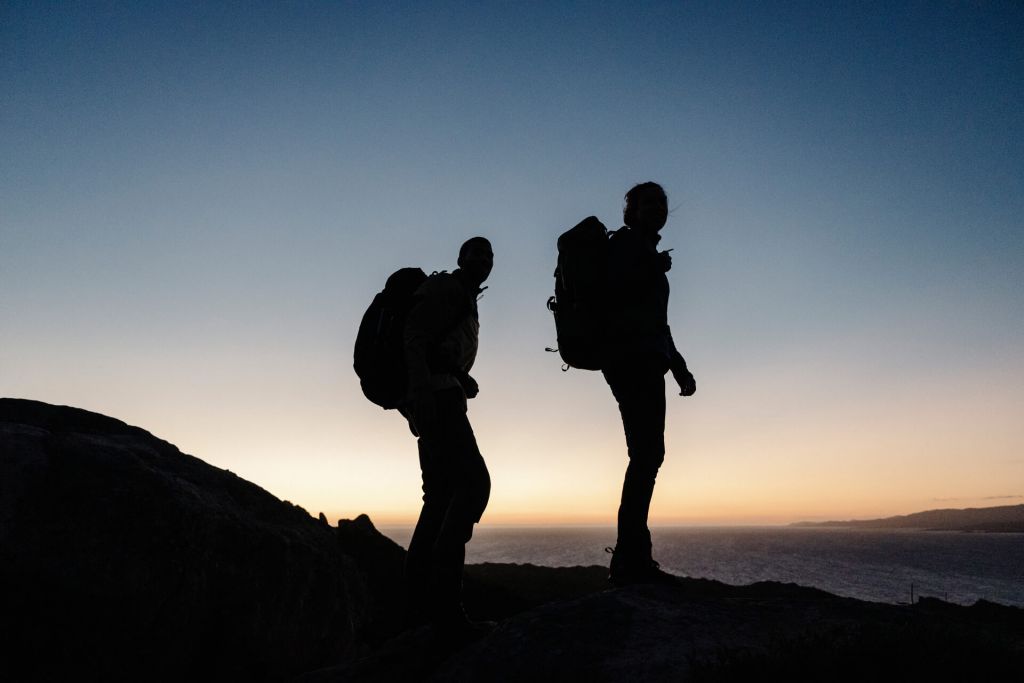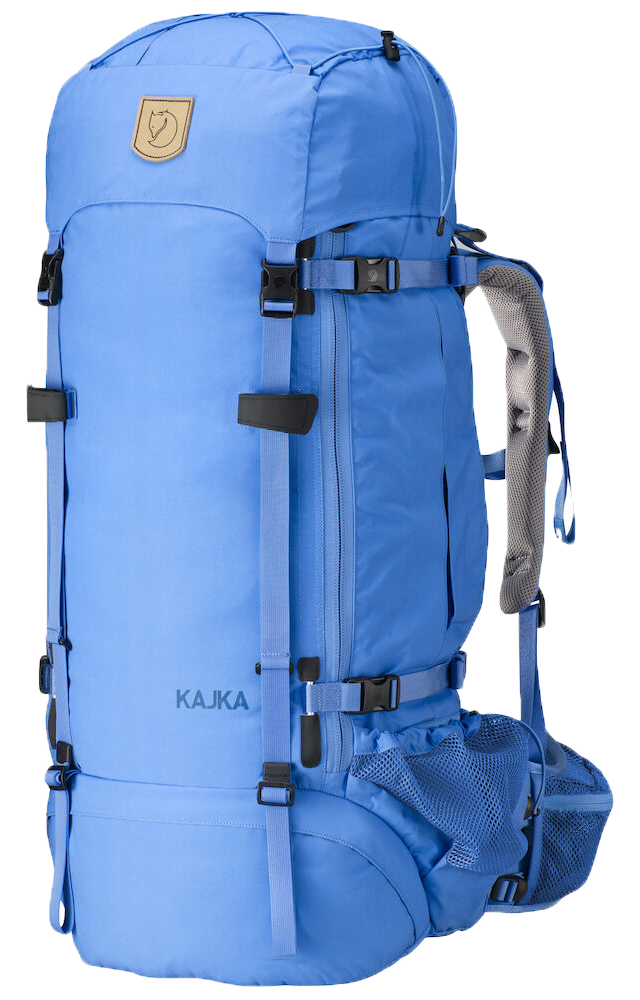How to pack and adjust your backpack
Different models. Specific compartments. New ways to customise fit. When packing and adjusting your trekking backpack so it’s as comfortable and functional as possible there can be a lot to *cough* unpack. Luckily, two experienced trekkers are here to take you through the process.
Did you know that a trekking backpack was Fjällräven’s first product? In fact, it launched our brand. Tired of flaccid, sagging, poorly built backpacks, founder Åke Nordin went ahead and made one himself. It was so well-constructed that when experienced foresters and reindeer herdsman tried it for themselves, they requested their own.
Backpacks remain the beating heart of Fjällräven today. Each one is made for peak functionality and comfort – and they deliver for a long time. The secret is how you pack and adjust them.
Not entirely sure how to achieve that? Luckily Fjällräven Global Event Manager Calle Hård af Segerstad and Fjällräven Guide Sofia Johansson can show you how.
How to pack your backpack
First things first, The Golden Rule: keep the centre of gravity as high up and as close to your back as possible. It prevents bending forward to compensate for a heavy load, as well as tipping and slipping.

To do this, let’s work from the inside out.
First, the main compartment. It’s for larger items that you don’t need on an hourly basis. Calle places a water-tight bag full of the things he does not want to get wet – like his sleeping bag, mat and extra clothes – at the bottom of the main compartment. Next, you’ll find his three-person tent, and then his insulation jacket and basecamp shoes. He tops it off with two pack bags filled with spare food, a first aid kit and rain gear.
The front pocket is for things used during longer breaks. Calle puts his water filter, meal for the day, cooker, fire steel and seat pad here. Sofia, her rain gear, gloves, beanie and first aid kit. Plus, she always ensures her fellow trekkers know where the kit is in case of emergency.

The top pocket and outer pockets are for essentials that you want frequent access to. Calle uses the top compartment to store his map, compass and toilet paper. Sofia, her camera and toiletries. He also uses the outside pockets for things like his trash bag, water bag, rain cover and trekking poles.
Finally, the hip belt pockets of a Fjällräven backpack are practically begging to store snacks. With such easy access to your food, you can maintain your energy levels throughout a long trek. Sofia’s favourites are nuts and chocolate. Calle’s are beef jerky and dried mango. He also stashes his collapsible cup here too.
Backpacks
Selection
How to adjust your backpack
Creating the perfect backpack fit is all about adjusting and readjusting. And then readjusting some more. You cannot do any of these steps too much.
- Adjust the length of the backpack to suit your back height.
- Tighten the shoulder straps so they’re centred on your shoulders, following the natural curve.
- Secure and tighten the hip belt so the backpack rests on your hip bones.
- Secure the sternum strap for a close fit.
- Tighten the top straps, so there is as little space as possible between backpack and back.
In short, creating the perfect backpack fit is all about adjusting and readjusting. And then readjusting some more. Calle even suggests doing it every 30 minutes to ensure no part of your body is overworked. If your shoulders are sore, he says loosen the shoulder and top straps so the weight of your backpack rests on your hips. When your legs are tired, tighten them back up.
It’s impossible to adjust your backpack too much because it boosts comfort and reduces strain. It’s why the adjustable straps exist in the first place, so use them!

Bonus tip: How to lighten your load
Calle and Sofia’s final “how to” might be their top one: divvy up the gear when trekking with others. If Calle were to carry a tent and cooker in a bigger backpack, Sofia could use a smaller, 38-litre backpack. By packing strategically, you not only avoid doubling-up on equipment, but you can also swap backpacks to ensure no one is fatigued from carrying more, for longer, than they ought to.
In the end, there is no “wrong” way to pack and adjust your trekking backpack. It’s very often a matter of practice and personal preference. As Sofia says: “There are many ways to pack a backpack, but it is really important to find your own way. So try out your gear and find the way that suits you.”



